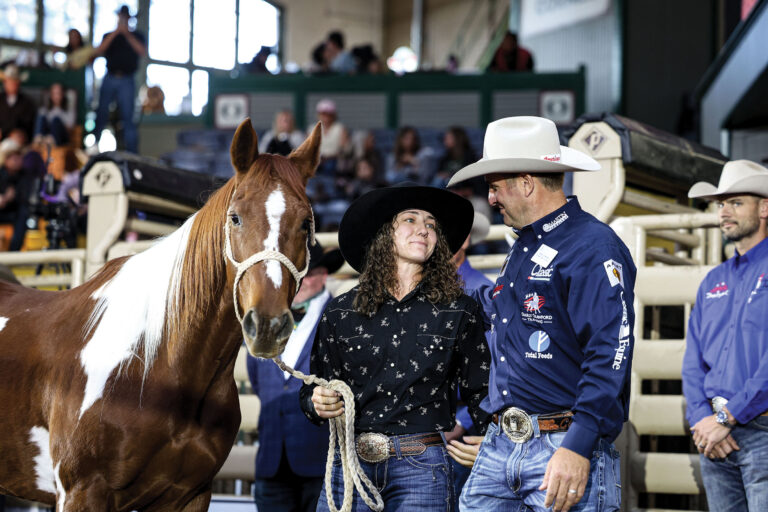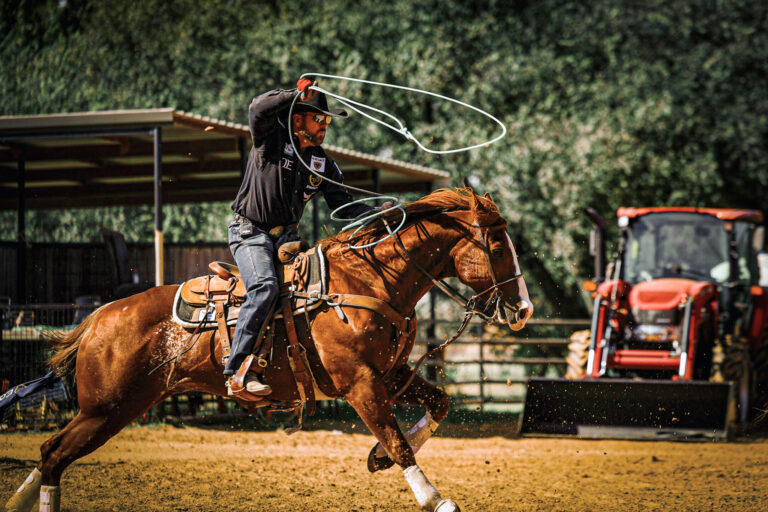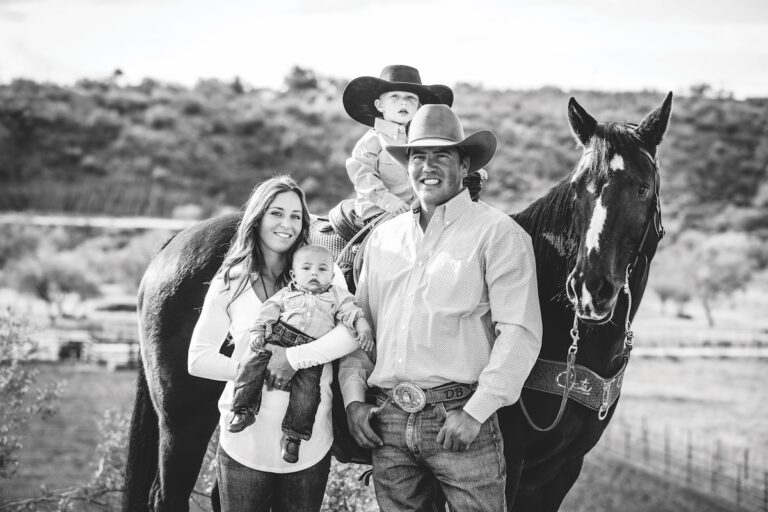COVID-19 and a tumultuous election year dominated much of the last year’s news cycle, but for those living in areas of impact, it will be a long time before the 2020 wildfire season is forgotten. In this magazine’s home state of Colorado, we endured three of our largest wildfires ever. Our own editor-in-chief, Chelsea Shaffer, provided refuge for some 40 horses on her own property one particularly harrowing October weekend, while more members of the team hauled horses out of harm’s way and donated blankets, buckets, time and more to our local community and their evacuated animals.
Soon, we discovered members of our team roping community who also played predominant roles battling the fires here in Colorado, but also in the coastal West, when record-high temperatures and dry conditions took a particularly terrific toll. These are the ropers who faced the 2020 wildfires at the fire line.
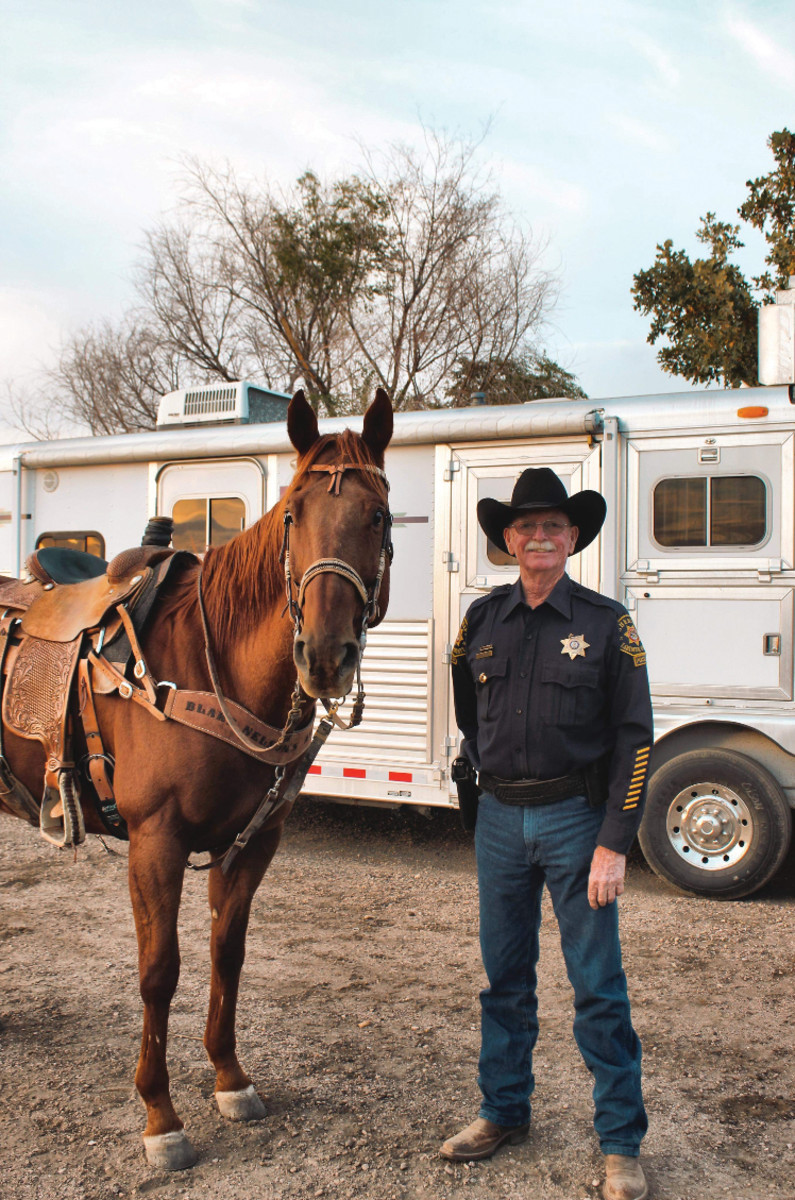
Gene Olson
If Eaton, Colorado’s Gene Olson looks or sounds familiar to you, it’s probably because we just introduced him in our January 2021 issue—he and his twin brother, Dean, 73, have spent decades volunteering for Colorado’s Larimer County Sheriff’s Posse.
And, in addition to operating the youth rodeo at the Larimer County Fair, participating in community drives, providing armed support at events and more, the Posse is also tasked with aiding the Sheriff’s department when the wildfires break out. For Olson, that has often meant getting into the mountains to pull livestock out of harm’s way.
“This year’s fires covered a lot more ground than the High Park Fire did a couple years ago,” Olson said of the Cameron Peak Fire, which burned in close proximity to the 194,000-acre East Troublesome Fire that started on the west side of the Continental Divide but burned so big that it ran up and over the mountain peaks, nearly merging with the Cameron Peak Fire. “There was a large area to get to and get the animals out of.”
Managing that aspect of fire response alone is no small task.
“We’re constantly rescuing horses and other animals out of the mountains and bringing them to our fairgrounds so they’re housed, they’re fed, they’re looked after until the owners can establish some place to take them back to,” Olson said. “We had three shifts a day. There was animals coming in and making sure they were all fed and watered and getting veterinary care if they needed it. That was a big challenge to keep that all up and going and taken care of.”
Sometimes, the work goes according to plan, but sometimes it doesn’t.
“It gets pretty iffy. I was up in the Masonville area pulling horses out of there and a couple other areas up behind Horsetooth,” Olson described of the reservoir and the area west of Fort Collins when he was responding to 2012’s 87,000-acre High Park Fire. “I took a team of Posse guys and we went in and brought out 75 head of cow-calf pairs of the fire. That’s the day it blew up. So, we had fire burning around us. We were trying to push those cattle out and we finally did get them down and out and into a safe zone, and we were able to save all the cattle.
“We had a two-hour window to get them out because the [water] bombers were coming in and they were starting to blow up. The wind switched directions, so we were pushing pretty hard to get them out. We were very successful and got everything down and out of there safe. All the Posse guys got out safe. It’s a challenge, but you just go do it. That’s what we do.”
There are safeguards and operational procedures in place to keep responders safe—Olson says a fire deputy will pull them out if things are bad—but, on occasion, the fire can make that call, too.
“At the High Park Fire, I went in with a partner of mine and while we were loading horses, the fire department was hosing down the area, hosing down my truck and trailer. There was a horse trailer parked right behind my rig that we were loading horses in that caught fire.
“The fire guys were able to save the barn and the house, but it burned right up to the foundation. The fire department hosed down the ground in front of me so I could get out of there with the horses. It can come in that quick. When we went in, it wasn’t that bad of a situation, but within 30 minutes, by the time we got the horses gathered up and caught, loaded, the situation turned real bad, real quick.”
Olson has just recently retired from the Posse after volunteering for a notable 43 years, but still manages to get in a few team roping practices each week before heading out to the weekend ropings to catch a few horns. That is, when he’s not cheering on his grandkids at the rodeo arena.
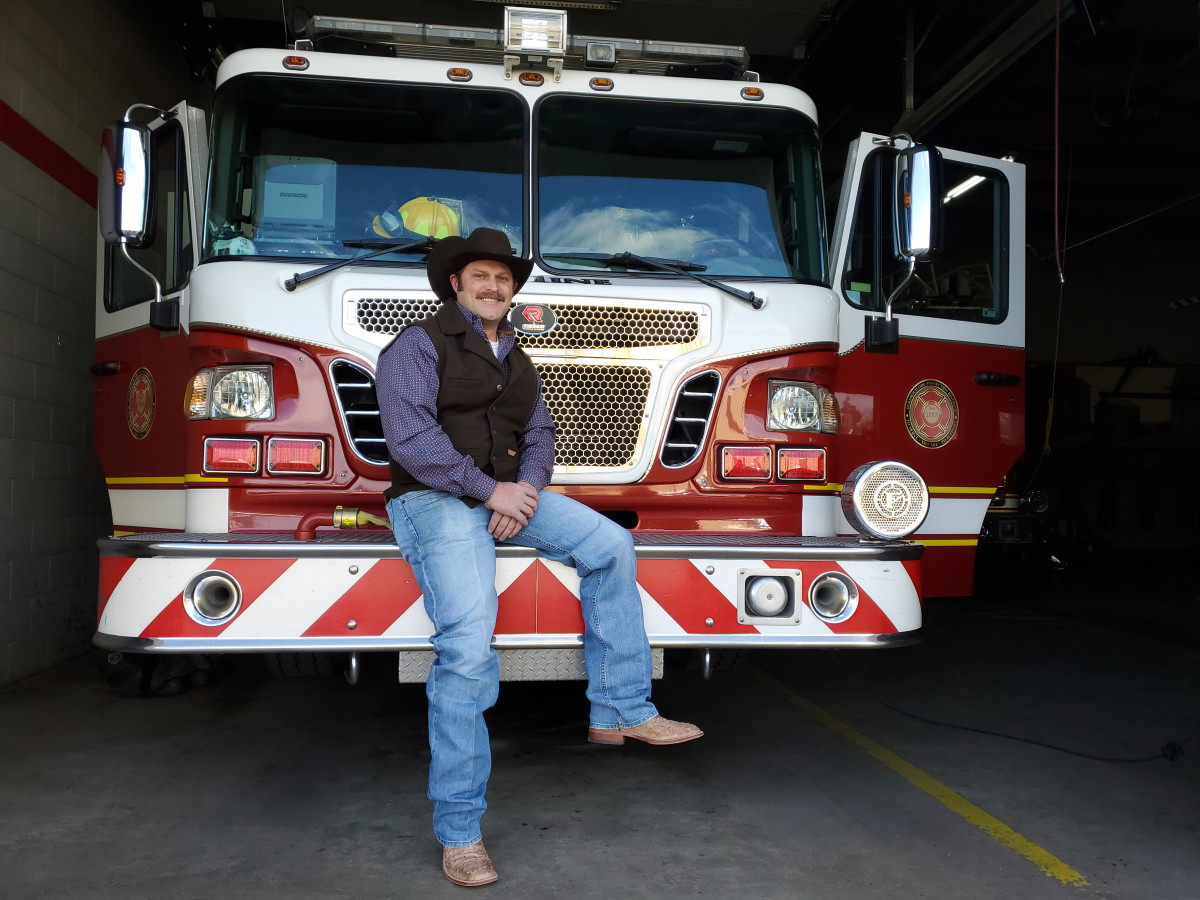
TRJ File Photo/G.R. Schiavino
Kyle Stricklin
Greeley, Colorado’s Kyle Stricklin, 34, is a career firefighter with the Berthoud Fire Department in Northern Colorado. In a move to increase his chances of hiring on with a structured fire department, he first signed up to fight wildland fires in 2008.
“There’s a government database for the BLM and the Forest Service that you put in your application and you can send it to whatever agency is hiring,” Stricklin explained. “I just filled out as many applications as I could and Idaho was the first one to call and offer me a job, so I took it.”
Stricklin had only meant to use the opportunity as a stepping stone, but it turned out to be much more.
“It was only meant to be a summer job, until I could get on with a structured department, because at the time, a lot of the departments weren’t hiring people. They wanted all the new people and the volunteers to have some sort of structured fire academy and fire experience. I decided I would do that for a summer and fell in love with it and did it for four or five more years.”
After two years in Idaho, he returned to Colorado for more wildland experience in Rifle before coming back to the Front Range, where he operated a welding company while also getting his EMT certification. Then, in 2015, he joined up with Berthoud.
“This will be my fifth year,” he said. “It’s a full time, paid, structured department. But we’re actually one of the few departments in Colorado that has a dedicated wildland team, so during the summertime, we send rigs out nationally—California, Oregon, Georgia—just wherever we get resource orders for. And we send an engine with crew out that way, too. That’s one of the things that really drew me to Berthoud, is they still have the wildland crew. They’re pretty big on the wildland side with the firefighting.”
This summer, the Cameron Peak Fire ignited on Aug. 13 in the mountains west of Fort Collins. A godsend of a snowstorm in late October helped tamp down the behemoth that devoured almost 209,000 acres before it was finally fully contained on Dec. 3, 2020, but in between, thousands of firefighters were called upon to defeat her, including Stricklin.
“It was absolutely remarkable. Due to the terrain and the fuel type, normal tactics of what we would do to head it off or to stop it or put it in check just weren’t working. We had to put people out in front of it and the winds added danger obviously, and the use of fire retardant and the line and things that everybody had done. The winds did not help, and it pushed everything we tried to do to it. It was definitely a rough summer for Colorado, for sure.”
In addition to high, warm winds that sent the fire on explosive runs, fire crews also dealt with unusually difficult terrain, endless acres of beetle-kill primed fuels and, to top it off, operations forced to function under COVID-19 safety precautions and restrictions.
“This year—with wildland fires and corona—was a tremendous mess,” Stricklin admitted. “We didn’t have the typical briefings that we would normally get, and we had to do everything over radio, so getting your assignment and getting to work actually took some time. The other thing with COVID was we weren’t allowed to have fire camp like you normally would—where we would go to after a shift, get some chow, and set up a tent and sleep in the big command post. This year, everybody had to stay in hotels. There was a couple times we had to drive way out [East] and stay out there just because we couldn’t find one. It was super rough because people were being evacuated and the hotels were just being pushed to the limits.”
When Stricklin isn’t on call at the station or spending weeks at a time on the fire line getting the experience he needs as the Engine Boss Trainee, the 3-heeler can often be found roping in the area, though he’s hoping to travel to some bigger ropings in the future.
“For the most part, right now, I’m just getting my dally and making sure I’m not leaning. You know, being able to ride down there and make that corner good and get myself in good position. Get a couple of swings going over the back. I’m a number-3 heeler, so it’s not like I need to be making 6-second runs. So, getting out there and getting in time to make sure I get a good loop.”
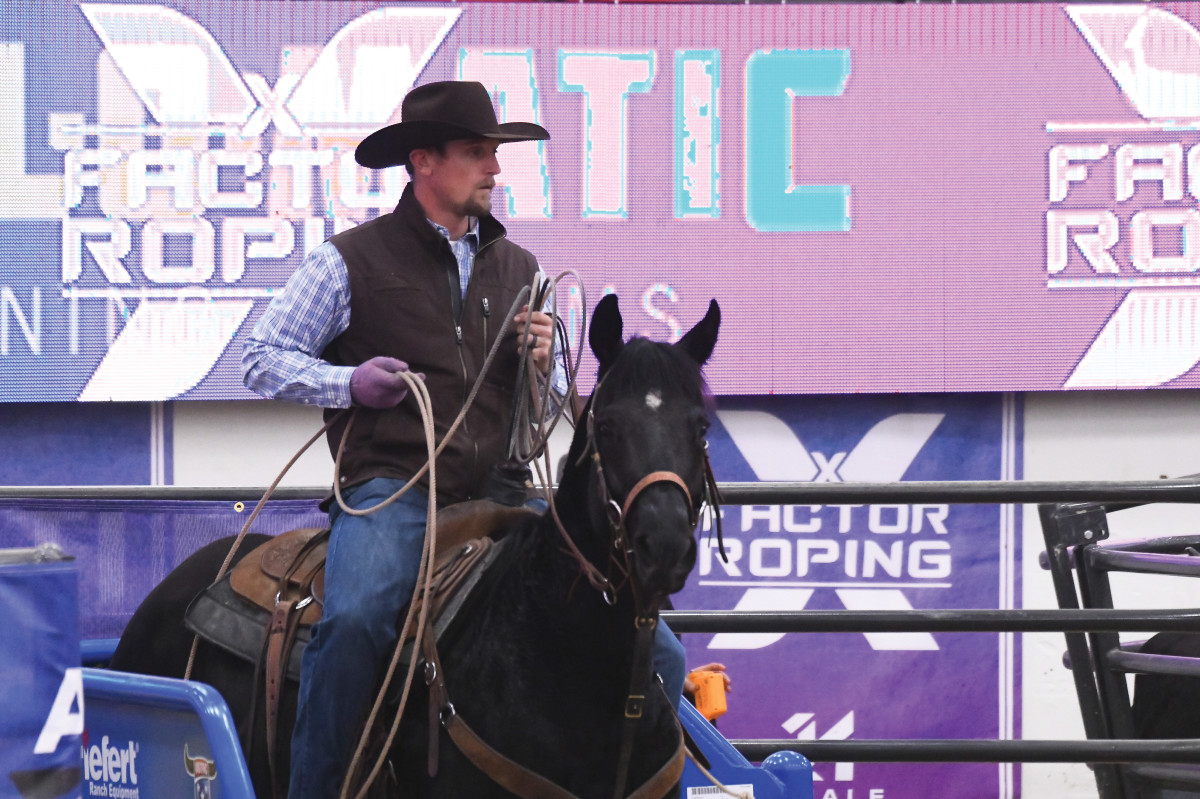
WSTR Photo/Jennings Photography
Sean Santucci
By the time Colorado caught fire in 2020, the West Coast had long been ablaze. An article from Yale Climate Connections offers some perspective on what author Jeff Masters, PhD., calls “an apocalyptic western U.S. wildfire season.”
“In California alone, nearly 4.2 million acres burned, more than double the previous record of 1.67 million acres in 2018,” Masters writes. “Five out of six of California’s largest fires on record occurred in 2020, including the largest in state history—the 1.03-milllion acre August Complex fire. That one was the largest wildfire in the continental U.S. since the Great Fire of 1910, which burned over three million acres in Idaho and Montana. Beyond California, Washington experienced its largest wildfire on record in 2020, and Colorado had its three largest wildfires on record.”
Former PRCA steer wrestler, now team roper and wildland fire responder Sean Santucci, 33, of Prineville, Oregon, says it a little different:
“It was a pretty good fire season. I mean, that depends on how you want to look at it. Shoot, we fought fire in California, Oregon and Washington. Pretty much all up and down the West Coast.”
Santucci and his father, Brad, have contracts with the states, the Bureau of Land Management and the National Forest Service to run heavy equipment when the order comes to establish fire lines—a service Brad started some 15
years ago, with his son joining the operation for the past decade or so. This summer, though, was significant.
“The size of the fires—they were big. It was a dry winter and not much ground moisture, so everything started drying up in July and it just made for a long [fire season,] especially in California. California got hit really hard.”
Santucci enjoys the work—“It is fun. Pretty good adrenaline rush when you get up there. You get to see some neat stuff. Neat country and just watching the size of some of those operations on the fires is pretty cool”—but he had a rough night or two this past season.
“This year, I was kind of sweating” he admitted. “One of my guys had to abandon a dozer and the fire took a pretty good run. He called me and tells me, ‘Hey, I had to abandon the dozer. Someone picked me up and told me I had about 5 minutes to get out of there.’ So, I got to sleep on that for a night and wait until morning to see what happened to it. It ended up he got it parked in a good spot and got a pretty good safety zone pushed out and it ended up making it through, but it had me pretty nervous. That’s really the first close call that I’ve got where somebody had to abandon a dozer.”
Santucci explains that losing a bulldozer doesn’t just cost the loss of the equipment (a $120,000-hit, he estimates). It also means pulling equipment off any other fires they’re battling to retrieve the burnt-up equipment, from wherever it was, in whatever terrain, when the fire took it over.
Luckily, Santucci didn’t have to navigate that loss and could keep operations moving forward.
“If the weather is stable and everything, we’ll fight right direct on the fire line. You’ll have air support flying in bucket drops along the fire line and then you’ll push, you know, 500 yards and push the line in and then another bucket drop will come and you just kind of chase it or flank it kind of like that. It’s pretty fun. Well, like I said. It depends on how you want to look at it. Some people might not like it too much, but it dang sure sharpens your senses.”
The Santuccis also have first-hand experience with what happens when a fire isn’t contained in time, so they know well the value of the work they’re doing.
“In 2002 or -3, we had a fire on our Forest Service allotment that we run our cows on and it ran us out of there, oh, for probably three or four years. We weren’t able to go back just because of the ground erosion and the effects on the ground and, you have to let the soil kind of settle and let the plants rebuild and it keeps it from being too hard on it. We moved everything down and got [the cattle] clear, so we didn’t have any losses, but it was a pretty big loss not having that pasture and that piece of ground to run them cows on for the next four or five summers, actually. It kind of extended us out pretty good.”
Fire season has a way of aligning itself pretty neatly with haying on the ranch, so Santucci keeps pretty busy, but when he can, he gets a lot of enjoyment out of team roping, particularly with his dad when he can escape to Arizona for a visit in the winter.
“As thing settle in and I get a little older, I’m just trying to get a handle on the ranch, and everything right here and then hopefully be able to slip away and just improve. You know, I kind of have a competitive nature, rodeoing for 10 years full time, it’s hard to just leave that, but the team roping kind of scratches the itch a little bit for me.”
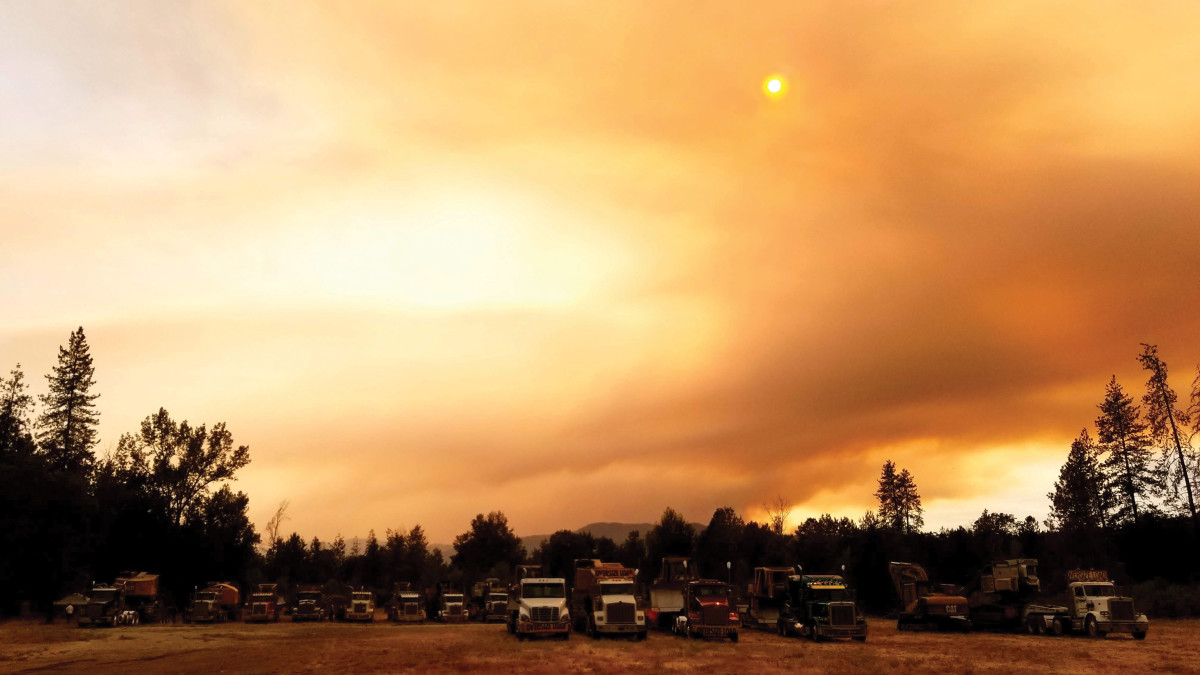
Courtesy Suntucci Family






